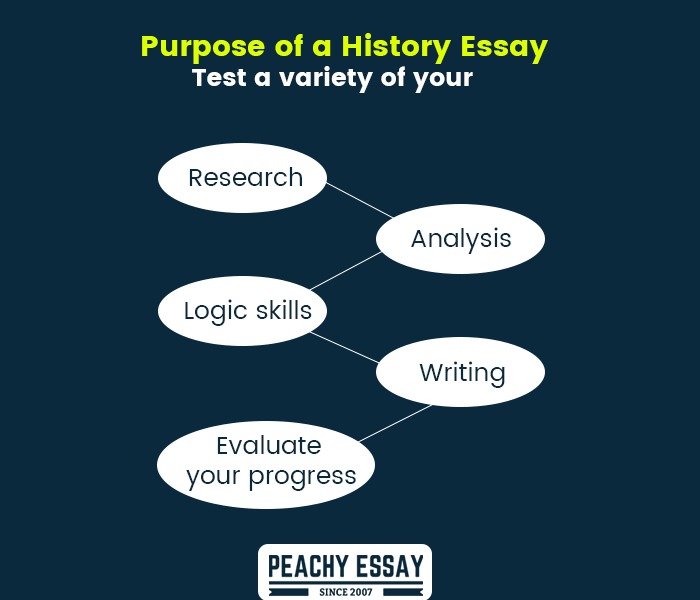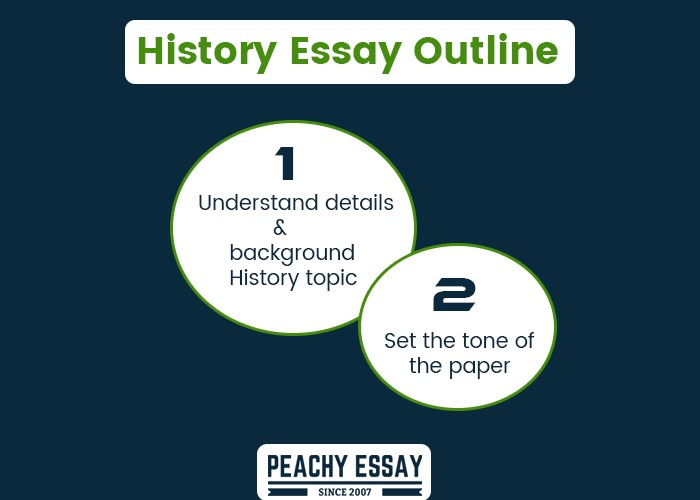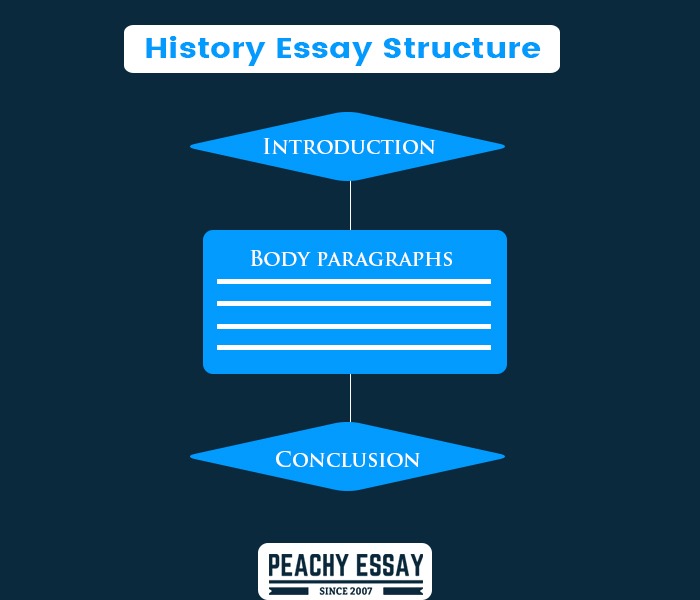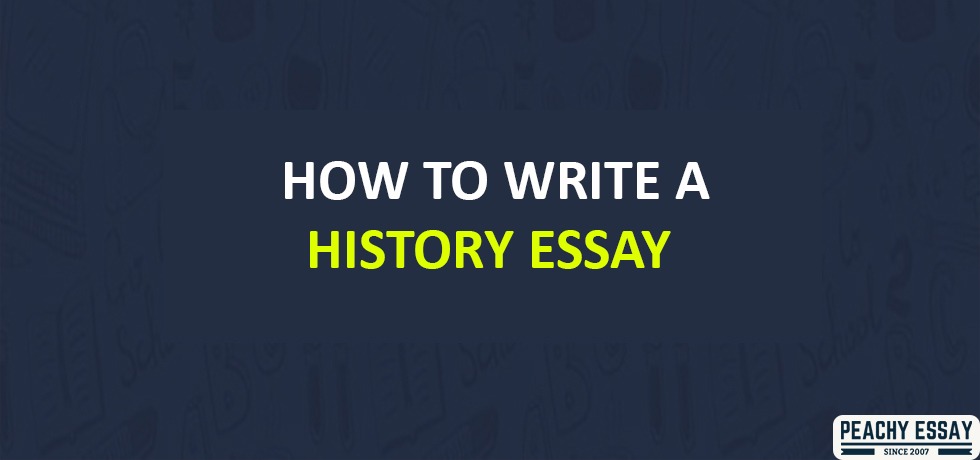How to Write a History Essay
A history essay writer must not be a great historian or anybody with specific historical skills. You don’t even need a college or university professor; instead, this is an opportunity for you to show your research prowess and your creative writing skills. The only problem with writing History essays is that you have to be ready to read through volumes of research materials to dig information and then write a comprehensive paper.
Besides being a subject, History is fascinating but also an extensive discipline. Over the years, there have been many established Historians who wrote good papers with the help of others, and therefore, you can also learn how to start a history essay and write it well enough to inform and excite the readers at the same time.
This article will take you through steps on how to write a good history essay that would get the readers excited.
What is A History Essay?
Understanding the purpose of a history essay and learning how to write one is simple. Just like any other university or college assignment, a history essay requires you to have a good reading culture. To write excellent and informative writing, all you have to do is to gather all your facts and build your arguments with supporting evidence. You don’t have to be of the particular history generation, and you can write a good essay when you dedicate ample time to unearth real chronological events and present them logically. Also, you need to append credible reference materials to your paper to make it yummier.
What is the Purpose of a History Essay?
You cannot become an accomplished history writer when you don’t know the purpose of your paper. The primary purpose of a history essay is to test a variety of your research, analysis, logic skills, and writing as well as evaluate your progress in learning history. It could also possibly be a particular topic that was recently studied in your class.

How to Prepare a History Essay Outline
A good history essay begins with a super outline; once you have your design laid out, you are good to go. You will need an outline as a guide to help you with your paper; this will help you keep track of your essay and stick to your topic. Some students often skip this step, but that is a big mistake; any scholarly paper should have a specific outline to make it universal.

Firstly, you have to understand the details and background of the selected History topic so that when you are introducing the topic to the reader, you will captivate their attention. Also, be sure to clarify any point that may seem ambiguous at the introduction stage.
The next step is to set the tone of the paper with a good Thesis statement of the History; this is what will help you build a strong argument for your essay.
Take a stance with your primary ideas, set the precedence with your topic direction; this will help you with getting the right reference sources so that you can back your arguments. After determining your topic direction, you need to formulate logical paragraphs.
Ensure that all your paragraphs are in alignment with your thesis statement and determine the words and sentences that need more emphasis in the conclusion paragraph.
How to Write a History Essay Structure
The general rule of a classic essay structure includes an introduction, three well-structured body paragraphs, and a satisfactory conclusion. The number of sections in the body of your essay depends on the length of your paper. This will also be determined by the number of points you want to include in the body.

-
The Introduction
Many students don’t know how to a history essay introduction paragraph that impresses the reader at a glance. Your Introduction is essential to keeping the reader on your paper. When the Introduction is good; it is assumed that the entire piece is worth reading. The Introduction is where you make the reader understand the purpose of the essay.
Usually, if you intend to make your Introduction a little bit more impressive, you should start it with a beautiful hook. Excellent introductions hook has something like a fact, an interesting quote, or some useful statistics. Also, you should include the background of your essay that will help the reader to synthesize the paper quickly. When concluding your introductory paragraph, you should end it with a strong thesis statement as your primary argument point.
-
The Body paragraphs
Your main body paragraphs should support your thesis statement without deviating. All the sections should have different points that flow in building your paper. Don’t mind if your paragraphs are more than three of four as long as your topics are making sense and flowing logically.
The most essential in a history essay is to provide tangible evidence with references and no your opinions and ideas. You need to have a strong backing of your topic and don’t let the reader ponder your primary objective.
Don’t be afraid to be analytical in your paragraphs, you should demonstrate your ability to present facts, draw conclusions, and bring out logical connections, and this will make you stand out as a skilled history essay writer.
-
The Conclusion
A satisfactory history essay conclusion is as essential as the introductory paragraph of the paper. You need to wrap up everything discussed in your essay and emphasize the key points that you feel should be stressed to the reader. Your conclusion should be satisfactory to the audience and convince them about your paper beyond any reasonable doubt. An excellent conclusion may drive the reader to get back and read the piece even more if it is impressive.
Also, note that your conclusion is not an opportunity to introduce a new topic or research information. You don’t have to go beyond what is already in your essay. Also, in the remaining parts of your conclusion, rewrite the thesis statement, and give supporting arguments to demonstrate how successful your research was.
Also, note the following about introducing a History Essay paper.
Usually, the readers may decide to read through your paper or not, depending on how impressed they are. Also, strive to keep your paragraphs within the limit of seven sections. Your history essay should have an elaborate context of your selected topic to help your audience understand your paper a lot more quickly. There should be a smooth transition to the next step of your outline from your Introduction.
The other crucial aspect of writing a good history essay is to have the audience in mind; you should write your essay with a particular audience in mind. When you focus on the audience, you will strive to answer the right questions that would be asked by the readers. Whether you are targeting your instructor, a journal, or any other publication, you should pay attention when writing your paper.
Always build on your thesis statement and make it flow. Your thesis statement could include facts or statistics or evidence that supports your debate when your work is argumentative. Ensure that your sentences fluidly lead your readers to the thesis or your primary idea of the history essay.
If your paper does not express a specific idea that functions well as an outline for your paper, your essay may be as good as doomed.
How to Write a 10th-Grade Essay
The first thing to do before writing a 10th-grade essay is to decide on the kind of paper to write. Think of the various parameters of researching appropriate topics before you settle on one. Once you have determined the issue to write about, the next crucial thing is to brainstorm your subject, study well, develop a catchy thesis, and prepare an Outline for Your Essay. Once you are through with the fundamental part of the essay writing, you can now begin writing your paper as the first draft, ensure you write first without minding the errors. When you are done with the first draft, proofread the paper at least thrice to check grammatical errors and poor sentence structure.
Like any other essay, the 10th-grade essay follows the same procedure; this includes:
The introduction, body, and conclusion
How Long Is A History Essay?
Generally, essays are about four to five pages long, though some may go as far as seven pages depending on the content length. You should also note that when writing the essay, use fully-formed paragraphs. Many students tend to write very brief paragraphs with fewer sentences; however, a good history essay should contain sections that look like mini-essays within your essay. A history essay should be detailed to dispel any doubt and be elaborative enough to give the audience an excellent chronological analysis of the topic. In usual scenarios, your essay paragraphs should be between one hundred to two hundred words.
How Do You Write A Topic Sentence For A History Essay?
Firstly, what is ‘Topic Sentence’? Generally, a topic sentence appears at the beginning of every paragraph, which depicts the main argument of the essay. Usually, topic sentences are independent and can give the reader an overview of the whole paragraph, which should also answer the main sub-question of the essay body.
How to Create a Topic Sentence
Once you have arranged all your quotes in line with your sub-questions to provide answers for, you can begin answering each question giving clear information that stands out. In this case, all the answers you provide for each sub-question will become the topic sentence.
Here is the step to step guide:
Step 1: Read the first sub-question and reread it; this will help you to synthesis what the question was asking.
Step 2: Go through all your quotes that you wish to use in supporting the sub-question.
Step 3: From your quotes, formulate a single sentence answer to the sub-question, and this single-sentence answer is what is known as the first Topic Sentence.
Step 4: since you are supposed to answer at least three sub-questions, repeat the same process above for your other two sub-questions so that you have a Topic Sentence for all your sub-questions.
Example:
Sub-question 1: What caused the world war one and two?
Having a topic sentence is good, but this alone does not guarantee that your work is now cut out on an excellent course. But what makes a good Topic Sentence? To know whether you have good Topic Sentences, here is the checklist to guide you through:
Ask yourself the following questions.
- Does your Topic Sentence directly answer the sub-question satisfactorily?
It will help if you read the sub-question at least twice in line with the Topic Sentence. If the Topic Sentence answers the sub-question, directly, then this makes a Good Topic Sentence.
- Does your Topic Sentence give out specific details to answer the question?
A good Topic Sentence is very précised and gives information that answers the question. Usually, topic sentences are often preceded by words such as “due to”, “because”, or “as a result of”. Also, one paragraph should focus more on a particular topic to ensure that it is explored comprehensively.
In other words, a topic sentence is referred to as the signposting sentence; it should start with a compelling opening sentence. The topic sentence is the paragraph topic that briefly explains the primary significance of the question and your contention to the reader. A good paragraph usually contains thorough explanations, wisely though analysis and tangible pieces of evidence, followed by a reasonable quotation or two.
Conclusion
Writing any essay requires dedication and commitment. Luckily for you, you now have a guide to help you prepare your next history essay paper. Also, there are several published essays out there, and you can quickly become a good writer if you take your time to learn. All you have left now is to follow the guide herein together with other published essays to sharpen your skills, and above all, you have to practice more. Remember that you don’t have to be a professional historian to write a good essay paper, if you are talented enough, research well on your given topics and write your paper. Soon enough, you will be a pro!







